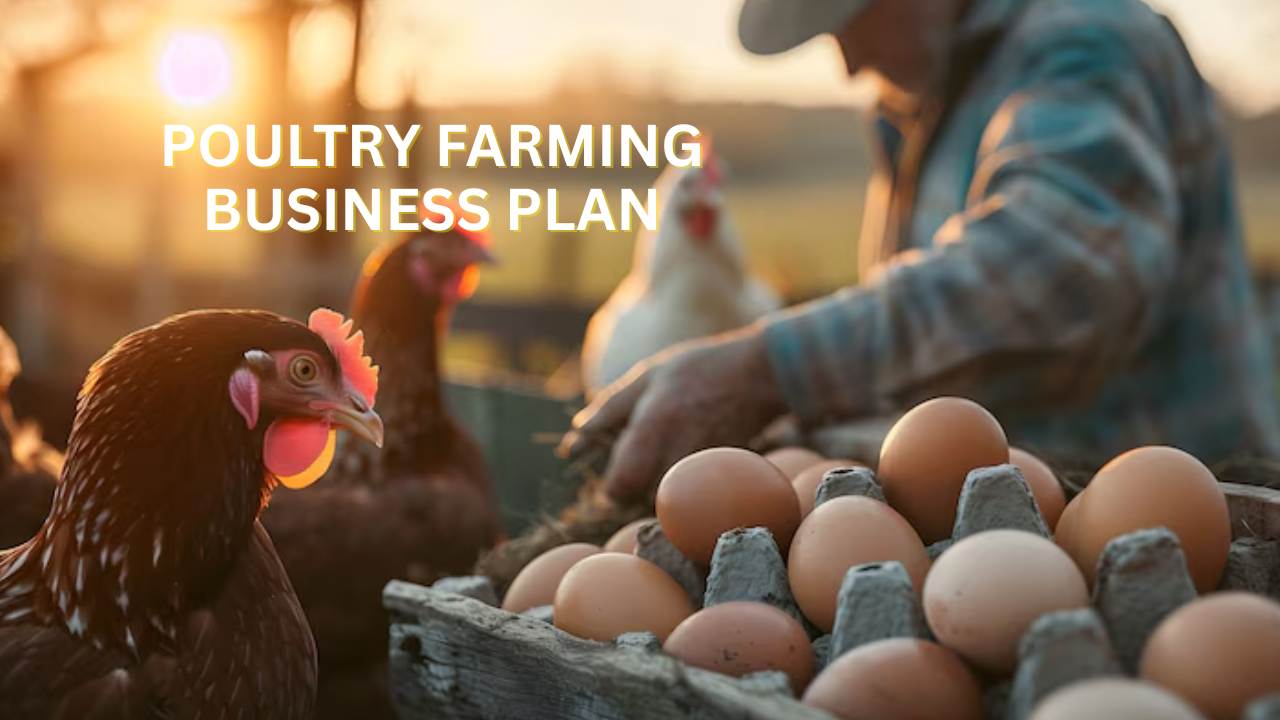The poultry industry in India is one of the promising agri business ventures which had been growing tremendously with an annual growth rate that had not been faced before going over 8%. The sector plays a huge role towards food security, rural development and employment generation within the country. A proper poultry farming business plan is the guide to successful business with the guarantee of profitability and stable development.
Consumers today would be more inclined to eating protein-enriched foods making eggs and poultry meat to be highly demanded products in the market. The favorable government programs concerning the livestock development along with modern technologies provide additional attractiveness to this sector as even more entrepreneurs are involved. The stability of the industry during the economic changes and the fact that the investment returns are relatively fast makes the poultry farming a profitable venture both to small scale farmers and the big commercial players with diversification revenue base.
Why Start a Poultry Farming Business in India?
- Growing: There is constant demand in the Indian market since India is consuming poultry at the rate of 6-8 per cent per annum due to the increasing incomes, urbanization and protein food consumption trends offering opportunities to producers and manufacturers.
- Employment: Unlike other forms of food production, poultry rearing creates a huge number of job sizes in both the rural and urban settings as it provides gainful employment to about 4 million individuals directly and indirectly via the process and supply chains it involves.
- Investment: It has a moderate start-up capital and has options of scaling down with the possibility of scaling up making it friendly to small scale farmers and at the same time is a diversification option to larger scale businesses who want to start a commercial operation.
- Returns: Offers relatively high returns in terms of other agricultural investments and the egg production patterns are able to yield income after 5-6 months of initial investment.
- Government: Various government projects, subsidies and technical assistance schemes specially intended to encourage poultry farming, such as NABARD loans, state level agricultural schemes and programs.
- Technology: Automated feeding system, modern breeding methods, as well as climate control technologies, are more productive and cost-effective labor and lead to a high efficiency of farms in general.
Types of Poultry Farming You Can Start
Layer Farming (Egg Production)

Layer farming is oriented on hens cultivation with the view of producing eggs which is the most stable part of the poultry business. Processes of laying cycles, optimized diet, and stable supply chains on the market should be organized systematically in this venture. The business presents stable sources of incomes with a predictive set of production, which facilitates financial planning. Nevertheless, the first installment expenses may be high because of installing adequate housing, feeding systems, or climatic controls. Prices and seasonal fluctuations on the market, as well as big commercial producers, create a constant threat. The management of diseases is important since layer birds live longer to produce thus takes a lot of time and effort of veterinary care and the whole biosecurity process during the operation time.
Pros:
- Steady income streams
- Predictable production cycles
- Consistent market demand
- Long-term profitability
- Stable customer base
Cons:
- High setup costs
- Market price volatility
- Extended care requirements
- Disease management challenges
- Competition from large producers
Broiler Farming (Meat Production)
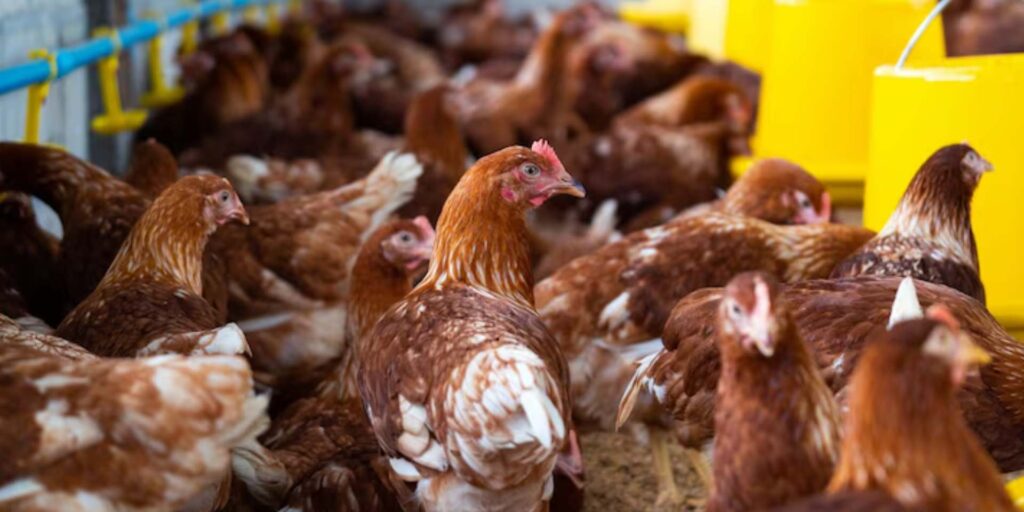
Broiler farming is rearing of chickens as a meat source, and it is quicker than the layer farming. The birds attain market weight in 6-8 weeks, which makes up to three production cycles a year and faster recouping of investment. Its meat market usually attracts a higher profit margin per unit, particularly in cities where the consumption of proteins is on the rise. The high-cost of feed, high-needed managements and susceptibility to diseases owing to the faster growing rates are some of the disadvantages. Timing of the market is important since any delay can be a huge loss concerning profitability. Broiler farming business ventures are complicated because of weather susceptibility, rigid biosecurity measures, and the necessity to have both an effective processing and distribution channel.
Pros:
- Quick investment returns
- Higher profit margins
- Multiple yearly cycles
- Fast market weight
- Urban demand growth
Cons:
- Intensive daily management
- High disease susceptibility
- Critical market timing
- Weather dependency risks
- Processing distribution needs
Integrated Farming

Integrated poultry farming brings together different farm activities in such a way that they work into each other. The system provides the best utilization of resources and prevents wastage, thereby creating many avenues of income. They include eggs, meat, organic fertilizers, and sometimes fish or crops. This system distributes risk and hence, sustainability through an environment of two-way farming. Yet, in achieving integrated systems, there arises the need for very well-grounded territory knowledge of many agricultural spheres, thus encountering all sorts of complicated administrative policies with a high level of investment. On the other hand, most farmers have serious challenges in arranging the production cycles of the different operations, controlling different levels of skills, and ensuring that all integrative elements function optimally.
Pros:
- Diversified income sources
- Optimal resource utilization
- Environmental sustainability benefits
- Risk distribution advantages
- Circular farming efficiency
Cons:
- Complex management systems
- Higher skill requirements
- Increased initial investment
- Multiple coordination challenges
- Diverse expertise needed
Essential Components of a Poultry Farm Business Plan
1. Business Goals and Scope
Vision: Solidify end-goals that outline the overall nature of what the farm will do, its size of operation, its positioning in the markets and its growth path within a 5-10 years horizon. Apart are precise objectives regarding production capacity, revenue generation, market share and geographical expansion which alone will guide the strategic decision-making procedures.
Mission: Identify the short-term functional objectives, yield targets, quality levels, and customer service guarantees to be followed on an everyday basis in the farm. Identify the concrete attainable results, schedules, and output indicators, which match the corporate vision of the business and market needs.
2. Target Market Analysis
The poultry market in India encompasses diverse consumer segments, including household consumers, retail outlets, restaurants, and institutional buyers. Urban areas demonstrate higher consumption rates and premium pricing acceptance, while rural markets offer volume opportunities with price-sensitive dynamics. Understanding regional preferences, seasonal variations, and demographic trends helps optimize product positioning and distribution strategies.
| Market Segment | Demand (%) | Price Premium | Growth Rate |
| Urban Households | 35% | 15-20% | 8-10% |
| Retail Chains | 25% | 10-15% | 12-15% |
| Restaurants/Hotels | 20% | 20-25% | 10-12% |
| Institutional | 15% | 5-10% | 6-8% |
| Rural Markets | 5% | 0-5% | 5-7% |
3. Type of Birds and Scale of Operation
Rhode Island Red:

Hardy dual-purpose breed is perfect to a novice: it lays brown eggs and has good meat characteristics. It has been adapted very well to Indian climate conditions, it does not need too much special care and has good disease resistant characteristics.
White Leghorn:
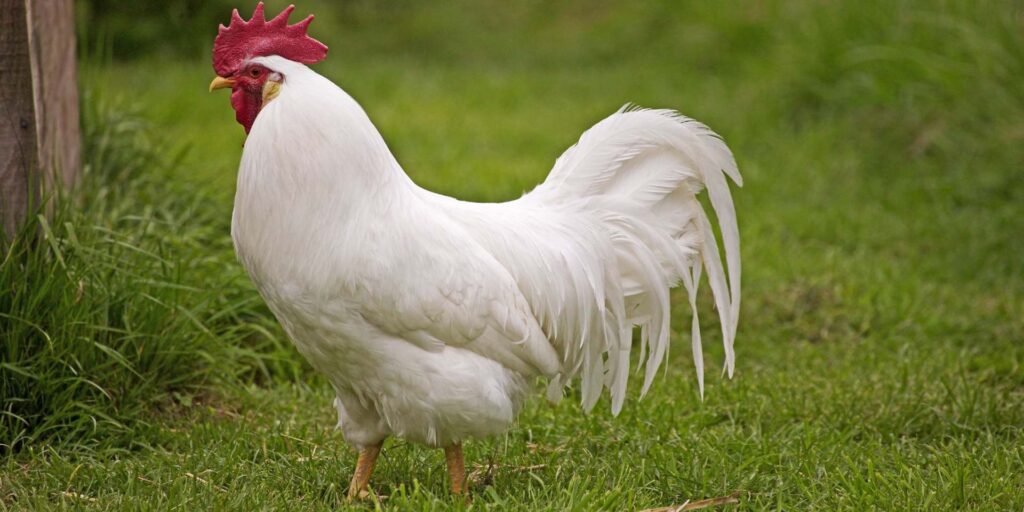
Breeds that produce a lot of eggs that lay 250-300 eggs per year per bird. Needs good nutrition and housing situations and has outstanding financial viability in terms of individual layer farming operations.
Kadaknath:
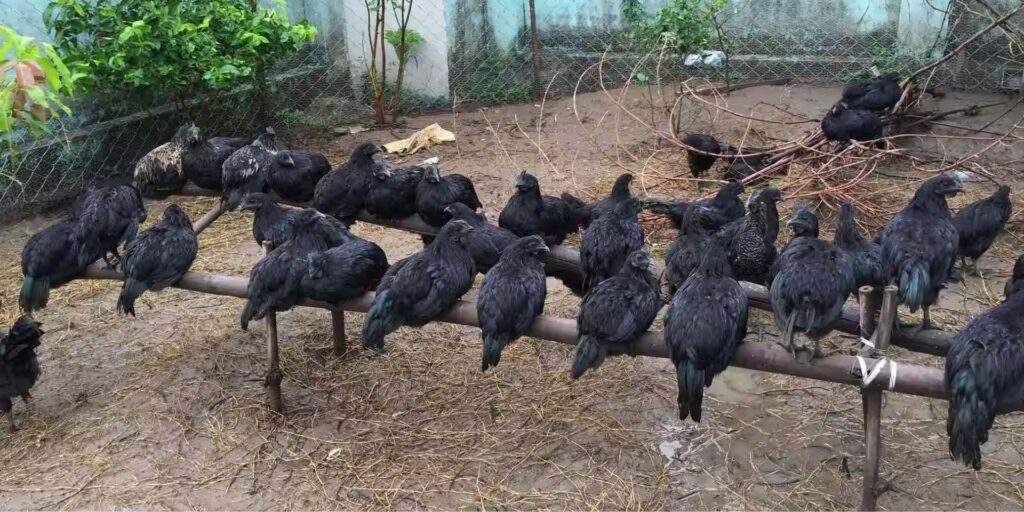
An interesting black meat breed with special significance in the treatment of various diseases, and that has high market prices. It has slower rates of growth, yet fetches 3-4 times the usual prices of the regular broiler chickens.
Broiler Chicken:

Commercial types of meat birds that grow extremely fast and can go to a market weight within 35-42 days. Needs close supervision, favorable environment and expert nutrition so as to grow best and make profits.
Country Chicken:
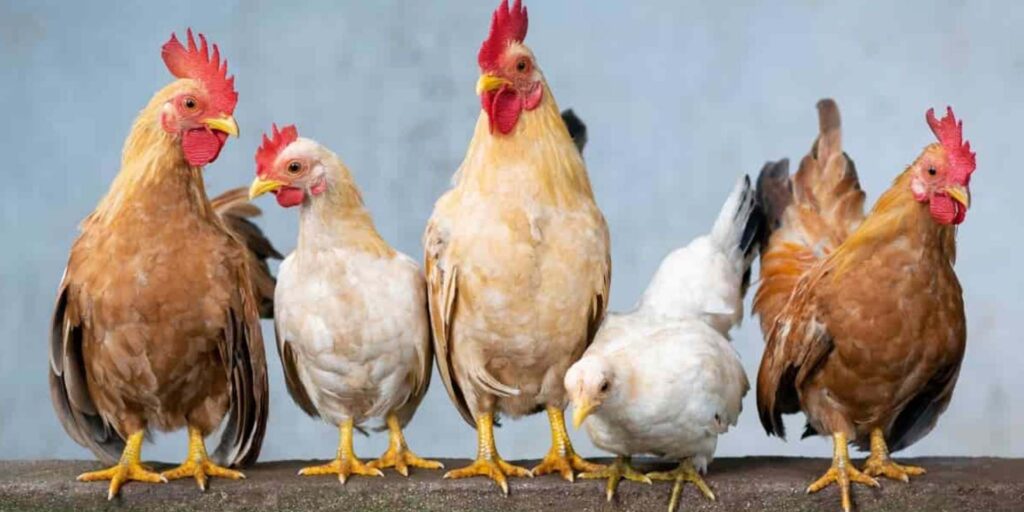
Indigenous varieties grown on the free-range prefer organic farming and high-hyped markets. A smaller growth rate, increased resistance against disease, natural food foraging behavior, and increased taste preference by consumers.
4. Breeding Strategy and Production Cycle
- Selection: Selections of breeding stock to be done on genetic quality, resistance to diseases, production traits, and adaptation to the local climate conditions. Keep records as desirable breeding results and genetic betterment plans.
- Incubation: Have controlled incubation procedures with the help of modern equipment or natural process. Check temperatures, humidity, and rotation periods as to hatch the best productions of good chicks regularly.
- Brooding: During the first 6-8 weeks supply proper temperature, light and food. Put in place suitable vaccination programs, biosecurity and surveillance so as to achieve high survival rates among chicks.
- Growing: Phase in growth with proper nutritional food, space and illness observation. Use weight monitoring, feed conversion improvement and environmental management systems in order to meet desired rates of growth economically.
- Production: Laying cycles should be optimized (layers) or market timing should be used (broilers). You should monitor the production performance, uphold quality standards as well as coordinate with the market demand in order to be as profitable and efficient as possible.
- Rotation: Produce plans so that there is optimization of facility use, guarantee of constant supply as well as preparation to maintain stability of the market. Timing the breeding and hatching of chicks as well as the marketing should be done to ensure that the income flow is constant throughout the year.
5. Marketing and Sales Plan
- Marketing Plan: Create an elaborate marketing program to target local wholesalers, retail stores, restaurants, and brokerage consumers in various ways. Exploit the use of cyber-space, sensitization in the neighborhood and relationship development so as to gain good market base and identification of brands in the target areas.
- Direct: Make farm-gate sales, and presence in the local markets, and relationship with consumers. Make customers to be loyal by using quality products, competitive prices, and constant supply of commodities in order to grow the business sustainably.
- Wholesale: Begin a relationship with distributors, retailers and bulk buyers. Bargain on advantageous terms, payment terms, and delivery conditions so that the access to the market could be stable, and the costs of marketing could be decreased.
- Processing: One is value-addition to the processing, packaging and branding. What can be done with dressed chicken, marinated products, or organic certification to get premium prices and stand out against the competitors?
- Online: Use on-line commerce, social media marketing and express shipping. The urban customers that target are those who want quality and fresh products with convenience in purchasing and home delivery channels so as to maximize on market coverage.
6. Financial Plan and ROI Projection
An elaborated business plan of poultry farming must include a financial analysis in terms of initial investment, cost of operations, expected income and profits schedule. The cost of initial investment varies with the size of operations and infrastructure options obtained, but it is usually 2-5 lakhs in the case of small scale operations and 20-50 lakhs in the case of commercial farms. The operating expenses are feed (60-70 per cent of total), labour, veterinary expenses, utilities and marketing. The ratio of revenues depends on the type of farming and concerning this respect, layers are produced with a ratio average (bringing in a certain amount of money per month) whereas broilers bring in a lump sum within a period of 6-8 weeks.
The break-even point is usually achieved in the first 12-18 months of well-run businesses with an 20-35% payback per annum on productive farms. Inconsistencies due to seasonal changes, market changes, and outbreak of diseases may have significant impacts on the financial performance and hence effective contingency plans and sufficient financial reserves in working capital are required.
| Financial Metric | Layer Farm | Broiler Farm | Integrated Farm |
| Initial Investment (₹) | 3-8 lakhs | 4-10 lakhs | 8-15 lakhs |
| Monthly Operating Cost (₹) | 40,000-80,000 | 60,000-1,20,000 | 80,000-1,50,000 |
| Break-even Period (Months) | 12-15 | 8-12 | 15-20 |
| Annual ROI (%) | 25-30% | 30-40% | 20-25% |
7. Risk Analysis and Mitigation Strategy
Business plans of poultry farming systems should include several risk variables that can leave substantial marks on it even when it comes to profitability. Most serious risk is creation of disease outbreaks that can result in the deaths between 20-80 percent and extremely high financial losses. Having enforced biosecurity measure, frequent vaccinations and having contacts with qualified veterinarians can reduce the risk of disease. The costs of inputs, as well as the product prices are subject to fluctuations in market prices, therefore any business in the market has to have a mixture of pricing tools and product channels and sufficient financial cushion. Weather-related threats such as intense temperatures, floods, power cuts maybe disruptive to operations and cause rise in mortality levels.
Back up power systems, ventilations and climate systems will eliminate issues related to environmental hazards. The fluctuations in feed prices contribute between 60-70 percent in the overall cost of operation, therefore, a procurement strategy plays a significant role in the profit making. Feed cost risk can be managed with establishment of relationships with a variety of suppliers, bulk purchasing plans and alternative feed resources. Operations may be affected by regulatory changes, environmental compliance regulations, and zoning which require continuous monitoring of policy changes and appropriate documentations and licenses.
Poultry farming stands out among the Best Village Business Ideas for Rural Entrepreneurs, offering a high return potential when managed with foresight, risk mitigation, and efficient operations tailored to rural strengths.
Poultry Farm Business Cost Breakdown
Building a successful poultry farming business plan involves proper cost planning in several areas where the cost is major in terms of contributing towards the investment needs. The infrastructure governing cost is an average of 40–50 percent of initial investment on land preparation, shed construction, electricity works, and water systems. The price of birds bought ranges depending on the season, quality of breeds and is 15–20 percent of the cost of start-up stock purchases. The biggest running cost is feed and supplement which averages between 60–70 percent of the total running costs during the production cycle.
The percentage of initial money investment to equipment investment is 10-15 in the case of feeders, waterers, incubators, and processing equipment. Labor and maintenance are based on the size and automation levels of the farm with an average of 15,000-40, 000 monthly. These costs are incurred in the packaging, transportation, and marketing of products, however, based on distribution strategies they vary but usually are a percentage of 5 to 8 percent of revenue. The insights in those elements of costs can be used to create proper financial projections and pricing approaches to sustainable operations.
| Cost Category | Small Farm (₹) | Medium Farm (₹) | Large Farm (₹) |
| Infrastructure | 1,50,000 | 6,00,000 | 15,00,000 |
| Bird Purchase | 50,000 | 2,00,000 | 5,00,000 |
| Feed & Supplements | 30,000/month | 1,00,000/month | 3,00,000/month |
| Equipment | 40,000 | 1,50,000 | 4,00,000 |
| Labor & Maintenance | 15,000/month | 30,000/month | 80,000/month |
| Marketing & Transport | 5,000/month | 15,000/month | 40,000/month |
Poultry Farm Business Investment Options
- Self-funded: The full control over processes of operations and decision-making is being given by the personal savings and family resources. Removes any interest payments or other expenses, but restricts the scale as well as growth opportunities by the amount of resources on hand.
- Bank loans: Poultry farming projects are serviced by commercial banks and farming banks which provide competitive interest rates. Demands work out business plans, has requisite security and imposes frequent payments but allows much bigger scale of operation.
- NABARD subsidies: National Bank for Agriculture and Rural Development offers special schemes on subsidized interest rates and technical help. Provisionally preferential to the rural entrepreneurs but with heavy documentation and compliance costs.
- Partnered model: Joint investment with other partners or cooperative societies divide, share, and contribute risks, resources, and expertise. Decreases the personal costs of a person and offers guidance to operations but needs common control and profit sharing arrangements.
Profit Potential in Poultry Farming
The potential of good profits is there in poultry farming when carried out with proper planning, a clear poultry farming business plan, and strategic positioning in the market. The industry is characterized by regular progressive trends as more consumers continue to demand protein-rich foods in urban and rural markets. The profit margins differ by the percentage level of 15–25% among the layers and 20–35% from the broilers, depending on how effectively they conduct their operations, the prevailing market environments, and the cost control measures they have. Proper value addition, direct marketing, and proper production cycles lead successful farms to be more profitable.
It is estimated that the market will grow by 8-12 percent annually because of increased incomes, demographic variations and eating habits. Nevertheless, disease control, cost- effectiveness of feeds and efficient marketing strategies are key to profitability in poultry farming. The farms that adopt modern technologies, follow the rules of quality and establishment of good relationships with customers remain over the industry average and show sustainable long term development.
- Average profit margin: Layer farming typically generates 20-25% profit margins, while broiler operations achieve 25-35% returns with proper management and market timing.
- Market growth: Indian poultry industry grows at 8-10% annually, driven by increasing protein consumption, urbanization, and rising disposable incomes across demographic segments.
- Scaling potential: Successful operations can expand through reinvestment, additional financing, and market development to achieve economies of scale and improved profitability over time.
Legal, Licensing & Registration Requirements
- FSSAI: Registration under Food safety and standards to be compulsory in sale of egg and meat on a commercial basis. As a consequence, it guarantees product conformity to quality, natural safety, and legal access to the market to the channels of distribution.
- Udyam: The registration of Micro, Small and Medium Enterprise entitles the concerned farming activities to avail all the government schemes, subsidies, priority sector lending, and other benefits of business development.
- Environmental: The larger commercial farms would need site and environment clearances. Addresses the issues of waste management, pollution control and the concerns or the impact on the community with adequate documentation and compliance steps.
- Support: Animal husbandry department avails technical support, disease control strategies, inoculation, and advisory services in order to achieve optimum farm management and productivity improvement measures.
Step-by-Step Poultry Farming Business Plan in India
- Executive: Steady business breakdown that defines goals, market opportunity, financial needs and returns. Investor or lender presentations should add management team credentials, competitive advantages and growth strategies.
- Layout: Maximally effective arrangement of farm with the regard of ventilation, biosecurity, efficiency of work flow, and opportunities of growth. Operational effectiveness and a regulative requirement incorporated plan shed orientation, drainage pipes, feed storage facilities and waste management facilities.
- Production: Selection of strategic breed selection, feeding, vaccination schedules and managing production cycle. Uniform output and profitability through developing standard operating procedures, quality control and performance tracking mechanisms.
- Marketing: Multiple channel product placement where the product will be sold to a range of customers by addressing diverse customer segments via the direct sales, Wholesale and retail associations. To penetrate into the market, prepare the prices policies, promotion activities, and the level of customer services.
- Financial: Elaborate revenues projection, cost analysis, cash flow, and timeline of profitability. Such as sensitivity analysis, break-even calculation and financing requirement to make informed decisions and the estimation of risks.
- Operations: The day-to-day management activities, personnel requirement, training and operation guidelines. Establish jobs, roles, and responsibilities, performance levels and communication systems towards the smooth running of the farm and production of quality.
- Risk Management: Comprehensive risk identification during operational, financial market and environmental factors that influence farm performance. Prevention strategies within the disease are restrictive biosecurity procedures, quarantine, vaccination, and collaboration with the vetting organizations to reduce a risk of mortality.
Challenges and Solutions
- Disease: Implement comprehensive biosecurity protocols, regular health monitoring, vaccination programs, and professional veterinary partnerships to minimize disease outbreaks and maintain flock health throughout production cycles.
- Market: Develop diverse sales channels, flexible pricing strategies, contract farming arrangements, and value-added products to navigate market volatility and ensure consistent revenue generation despite price fluctuations.
- Feed: Establish relationships with multiple suppliers, explore bulk purchasing options, consider on-farm feed production, and monitor market trends to optimize feed costs and maintain quality nutrition standards.
- Capital: Utilize various financing options including bank loans, government schemes, partnerships, and reinvestment strategies to ensure adequate working capital and support business growth and expansion plans.
- Technical: Invest in training programs, consult agricultural extension services, join farmer groups, and adopt modern technologies to improve operational efficiency and production performance consistently.
- Weather: Install climate control systems, backup power generation, proper insulation, and emergency protocols to protect birds from extreme weather conditions and maintain optimal production environments.
Common Mistakes to Avoid
- Planning: Weak business planning results in weak financial management, inefficient operation and unproductive market strategies. Establish detailed plans that involve everything prior to getting the operations going to achieve success.
- Location: Ineffective site choice influences transportation costs, access market, environmental regulatory, and expansion opportunities. Investigate zoning requirements, infrastructure access, and market distance prior to making final decisions on locations.
- Quality: Bird quality, feed standards, or housing conditions compromised lead to poor performance, high mortality, and low profitability. Practice high standards in all aspects of operation.
- Health: Failure to observe biosecurity, vaccination and health surveillance causes catastrophic health epidemics. Enact stringent health measures and contact with skilled veterinarians.
- Records: Ineffective documentation adversely affects performance analysis, financial planning, and regulatory compliance. Keep production, financial, and health records to make informed decisions and business optimization.
- Scaling: High growth rate and lack of proper management system, financial capacity, and market development cause an operation failure. Systematically plan by experience, available resources, and market capability.
Tips for Beginners
- Start: Start small and get experience, learn the market and gain management skills then go big by investing in bigger commercial enterprises that would involve a lot of resources and skilled labor.
- Research: Investigation should be done through adequate market researches, visiting of successful farms, a talk with experienced farmers, and of course cognizance of the prevailing local situations before any investment decision can be made and before any commitment in terms of operations can be done, to yield the best of outcomes.
- Training: Join agricultural trainings, online classes, and extension programs to become technically capable and gain management skills, and knowledge of the industry as key aspects to success in poultry farming operations.
- Network: Develop a network with suppliers, buyers, veterinarians and fellow farmers to gain resources, market opportunities, technical assistance and their collaborative learning experience to develop business.
- Technology: Take up the use of proper technologies regarding record-keeping, monitoring production, climate control, and farm management to enhance efficiency, cut costs, and promote the improvement of productivity without compromising the quality levels.
- Patience: Give ample room to learning, market development and refinement of operations. Do not rush in making decisions and have realistic expectations as you develop long term and lucrative poultry farming businesses in the country.
Conclusion
The creation of a comprehensive business plan in poultry farming is the key to achieving success in the agricultural entrepreneurship market in India, which is developing at the moment in terms of the production of protein. Solid opportunities associated with well-planned endeavors can be found in the steady development rates of the industry facilitated by the positive demographics and government programs. It can only succeed once there is good analysis of the market, proper choice of breed, efficient infrastructure planning, and efficient marketing which should be in keeping with the market demands and consumer preferences. The financial planning should include viable investment needs and cost control of the operations along with the profitability schedules in consideration of the possible risks and market swings.
The application of appropriate biosecurity, quality standards, and connections with the customers guarantee the sustainability of operations and competitive benefits. The use of modern technologies, professional training, and constant education help farmers to maximize production and fit to the changing market conditions. A good poultry farming business plan acts as a guideline in solving problems, taking maximum advantage of any opportunity and making success in the long-run out of this exciting farming industry.
FAQs
How much do I need to start a Poultry Farm?
Initial costs of the enterprise are 2-5 lakhs of small scale and commercial farms 20-50 lakhs on capacity and infrastructure options.
What is the break even time of poultry farming?
With good management and market conditions, break-even will be achieved within 12-18 months in the case of layers and 8-12 months in the case of broilers.
What kind of poultry farming is the most profitable one?
Broiler farming has larger potential profit margin (25-35%) than the layer ones (20-25%), yet layers have more stable income.
What are the key issues of poultry farms?
Disease management, fluctuation in the prices in the market, volatility in the prices of feeds, and compliance requirement to the regulations are major challenges.
Is there any government support of poultry rearing?
Yes, there are subsidised loans, technical assistance and development aid provided through different schemes of NABARD, state governments and through the MSME schemes.
